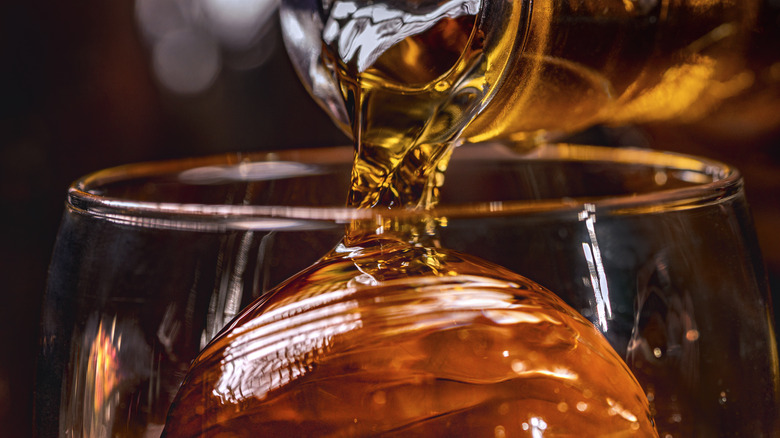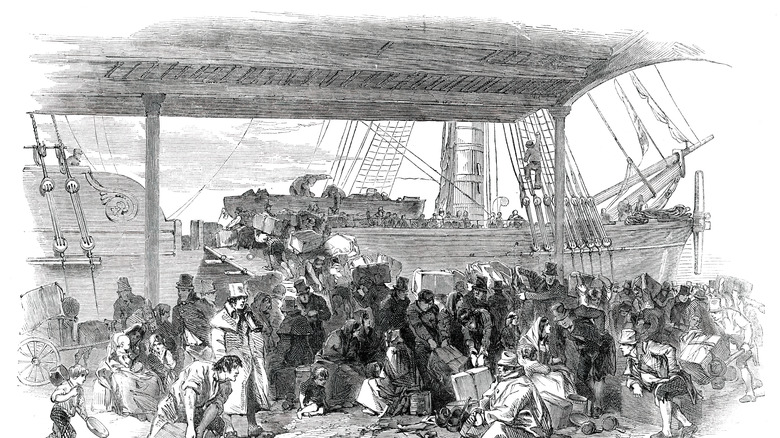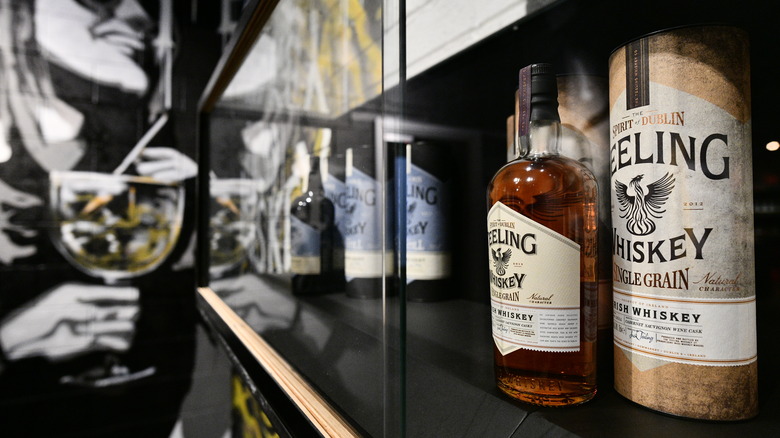We Have Irish Monks To Thank For Tennessee Whiskey
Americans love their whiskey. Jack Daniel's is the most recognized liquor brand name in the United States, and whiskey brands make up four out of the top ten biggest liquor brand sellers in the country. Bourbon and Tennessee whiskey are two of the most iconic all-American beverages of all time, as synonymous with the good ol' US of A as hot dogs and the Stars and Stripes.
But do you know who invented the whiskey we know and love today? A group of Irish monks. These monastic distillers learned their craft courtesy of Arabic perfume makers in the Middle East and applied the process to a drinkable booze that has since become the de facto brown spirit in Ireland and around the world.
The spirits were given the name uisce beatha, which means "water of life." This is the same meaning behind eau de vie, the French term for a clear fruit brandy. Clearly, these old-school distillers weren't drinking a lot of good old H2O. Uisce beatha was then shortened to uisce, pronounced "ish-ka," which is where we get the name whiskey from.
How Irish whiskey came to America
The Irish were distilling (and, some may say, perfecting) their whiskey for hundreds of years before they brought it to the States (thanks to those monks). Some of the earliest references to whiskey in Ireland date to the beginning of the 12th century — though some claim the spirit was being made in Ireland as early as the 6th century. At the very least, we know for a fact that it was consumed widely across the country by the middle of the 16th century.
The Scottish may sometimes debate whiskey's Irish heritage, of course, but existing records in Ireland about the spirit precede any in Scotland. And it was actually an Irishman, Aeneas Coffey, who invented the Coffey stills that became used to make Scotch.
Between the 1770s, when land grants drew many immigrants to the American South, and the 1840s, when the Irish Potato Famine drove around a third of the country's population out of Ireland, many Irish distillers wound up in the United States – where they set up new distilleries and turned the Americans onto their favorite tipple. Whiskey distilleries boomed in the United States, and it wasn't long before Americans became well acquainted with the monastic drink.
Irish whiskey's fall from grace
Americans started making their own versions of whiskey in what's now known as the American Whiskey Trail as soon as they had access to the know-how of a new Irish immigrant population. Bourbon, or at least the precursor to it as we know it today, was being produced in Kentucky by Irish immigrants as early as the 1780s, after they took advantage of local corn to replace the grains that were abundant in Ireland. The same process took place in nearby Tennessee, which quickly became a whiskey distillation hub in the years leading up to the Civil War.
Despite its initial popularity in the United States, Irish whiskey exports to the U.S. finally slowed down by the time Prohibition, which nearly killed the industry, came around. Once Prohibition was through, and the spirits industry began to rebuild, other spirits grew in popularity where Irish whiskey had floundered. Though it later experienced a Renaissance in the 1980s and 90s, by that time, Americans had gotten used to their Tennessee whiskey and their Kentucky Bourbon. Though Americans have never fully forgotten their Irish forebears ... the United States remains the largest export market for Irish whiskey worldwide, with the largest percentage of 15.2 million exported cases sold to the U.S. in 2022.



